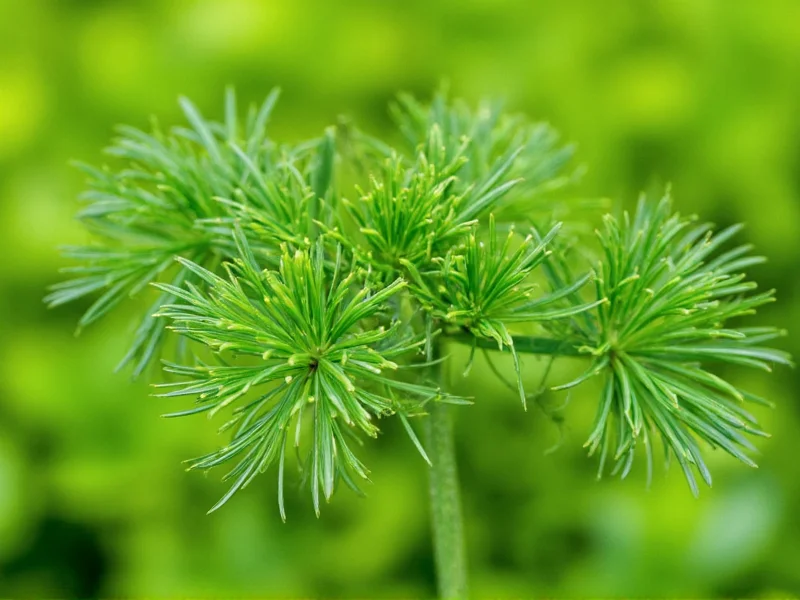Dill's unique taste makes it a staple in many culinary traditions, particularly in Scandinavian, Eastern European, and Mediterranean cuisines. Understanding the taste of dill helps home cooks and professional chefs alike create balanced, flavorful dishes that showcase this herb's distinctive characteristics.
Understanding Dill's Flavor Profile
When exploring what does dill taste like, it's essential to recognize its complex flavor components. Fresh dill weed delivers a bright, clean taste with:
- Primary notes of fresh grass and green herbs
- Subtle citrus undertones (particularly lemon)
- Faint anise-like sweetness
- Mild peppery finish
- Delicate floral hints
Dried dill loses some of its brightness but develops deeper, more concentrated flavors. The dill flavor profile when dried becomes:
- More earthy and woody
- Slightly more bitter
- Less citrus-forward
- More pronounced anise notes
- Subtly warming
Fresh Dill vs Dried Dill: Taste Comparison
| Characteristic | Fresh Dill | Dried Dill |
|---|---|---|
| Intensity | Mild, delicate | Stronger, more concentrated |
| Citrus Notes | Pronounced lemon freshness | Subtle, almost absent |
| Anise Flavor | Faint, background note | More prominent |
| Bitterness | Negligible | Slight bitterness |
| Best Used In | Finishing dishes, cold preparations | Cooking, longer simmering dishes |
How Dill Compares to Similar Herbs
Many people confuse dill with fennel or anise due to their shared flavor components. Understanding these differences is crucial when considering how to describe dill taste:
- Dill vs Fennel: While both have anise notes, fennel is significantly sweeter and more pronouncedly licorice-like, with a crunchier texture in its bulb form.
- Dill vs Tarragon: Tarragon has stronger anise/licorice notes with less citrus and grassiness than dill.
- Dill vs Anise Seed: Anise seed delivers a much more intense, almost medicinal licorice flavor compared to dill's subtle hints.
Culinary Applications of Dill
The dill herb flavor characteristics make it exceptionally versatile in the kitchen. Its bright, clean taste works particularly well with:
- Fish and seafood (especially salmon, trout, and shellfish)
- Cucumber-based dishes (tzatziki, pickles, salads)
- Potato salads and roasted potatoes
- Creamy sauces and dressings
- Vinegar-based marinades
- Egg dishes
- Vegetable dips
When cooking with fresh dill, add it at the end of the cooking process to preserve its delicate flavor. Heat diminishes dill's bright notes, so it's best used as a finishing herb. Dried dill can withstand longer cooking times but use it sparingly as its flavor concentrates during drying.
Factors That Influence Dill's Taste
Several elements affect the dill weed flavor notes you'll experience:
- Growing conditions: Soil quality, sunlight, and water affect flavor intensity
- Harvest time: Morning harvest yields more essential oils and stronger flavor
- Plant maturity: Younger dill has milder flavor; mature dill develops stronger anise notes
- Storage method: Improper storage leads to flavor degradation
- Geographic origin: Regional variations create subtle flavor differences
Substitutes When You Don't Have Dill
If you're wondering what foods pair well with dill alternatives, consider these options based on what aspect of dill's flavor you're trying to replicate:
- For fresh, grassy notes: Use fresh parsley or chervil
- For citrusy elements: Add lemon zest or fresh basil
- For anise-like sweetness: Try a small amount of tarragon or fennel fronds
- For overall flavor profile: Combine equal parts parsley, chives, and a pinch of caraway
Preserving Dill's Flavor
To maintain the distinctive taste of dill when storing:
- Refrigerate fresh dill in a glass of water (like flowers) with a plastic bag loosely covering the top
- Freeze dill in olive oil in ice cube trays for cooking applications
- Dry dill away from direct sunlight to preserve flavor compounds
- Store dried dill in airtight containers away from heat and light
- Use fresh dill within 5-7 days for optimal flavor











 浙公网安备
33010002000092号
浙公网安备
33010002000092号 浙B2-20120091-4
浙B2-20120091-4